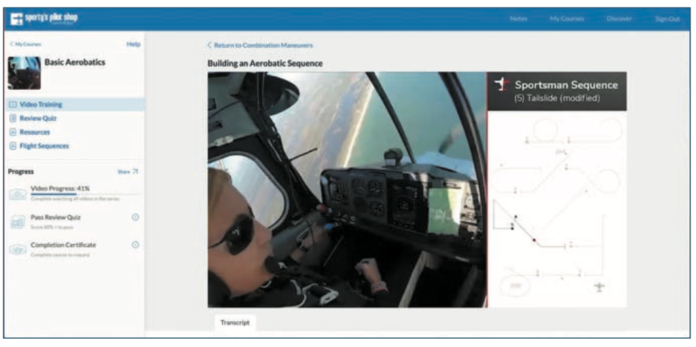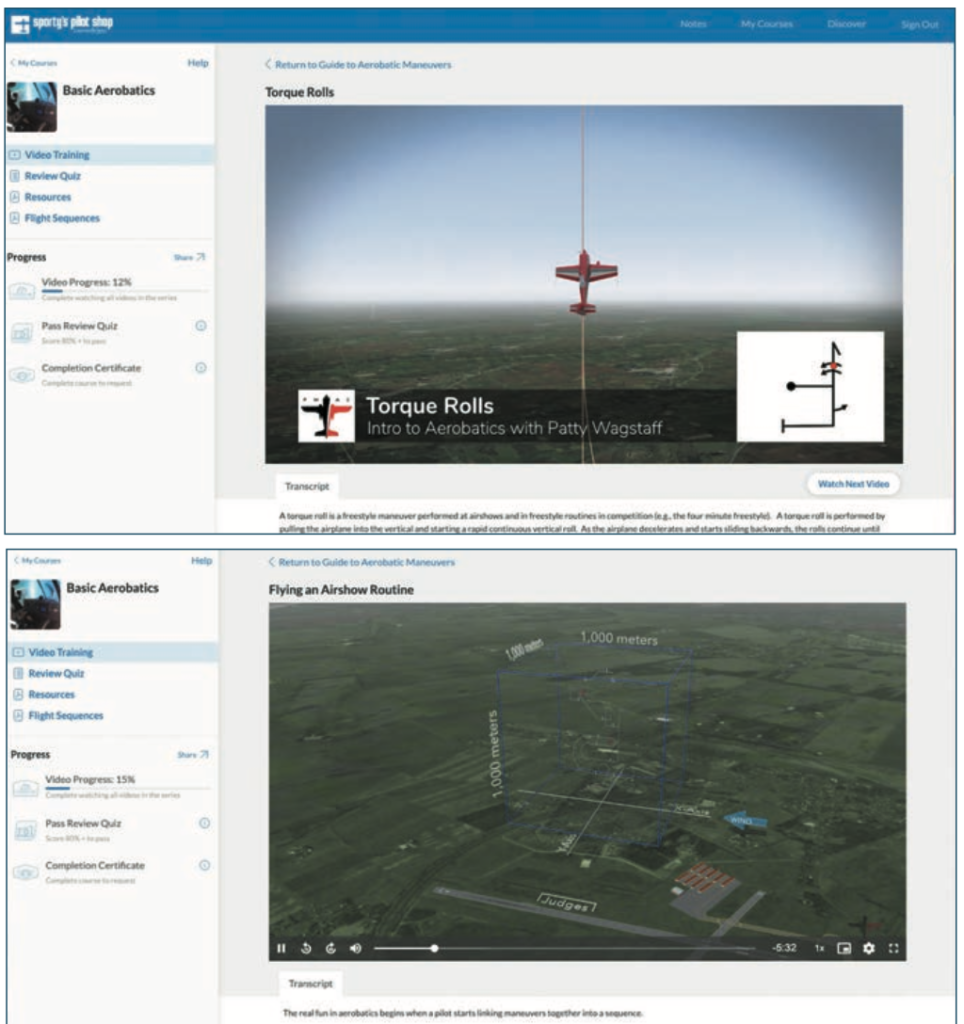
We flock to airshows. Throughout the world, tens of millions annually descend on airports to watch pilots dance in almost unimaginable freedom in the sky. Watching soaring gymnastics on a grand scale has inspired aviators-to-be for over a century—and we’re lucky enough to be living in an age where the dream of pulling hard to a 45-degree up line, putting the ailerons to the stop and rolling the world around us is an accomplishable reality.
Every year more and more pilots take the step they’ve long dreamed of—to loop, roll and generally burst free of everyday confines.
As with any rewarding human endeavor there is the process of learning—in this case how to cause an airplane to seemingly defy gravity while returning it and the occupant to the planet in a condition to do it again without any unpleasant interruptions.
That’s where good training comes in—and we consider good training to be the sort that explains clearly the how and why of doing something, provides detailed information on the right way to do it—with honest explanations regarding what can go wrong and how to fix those whats before they become dangerous—frankly reveals the risks involved and how to manage them and does all of it in a manner that is not only interesting, but causes the student to dig deeper into the subject as a whole.
At $149.99, we think that Sporty’s (www.sportys.com) most recent aerobatic training video course, Basic Aerobatics with Patty Wagstaff, meets our definition of good training.
A LITTLE BACKGROUND
Just over a year ago Sporty’s, in conjunction with former National Aerobatic Champion Patty Wagstaff, released its Introduction to Aerobatics video course. It was a survey course that provided a get-your-feet-wet, wide-ranging look at a complex sport. It was not as much a how-to course as an overview looking at history, regulations, physiological considerations, safety, avoiding doing stupid stuff, types of aerobatic airplanes and finding an aerobatic school.
We liked it, especially the manner in which it introduced aerobatic maneuvers, and we looked forward to the videos to come which would, we anticipated, get more into the nuts and bolts of flying each maneuver.
We were not disappointed when the next video course, Basic Aerobatics, was released a few months later. It concentrated on the three fundamental aerobatic maneuvers—the loop, roll and spin—and went into detail on flying each. We mean detail—each video for a ten-second maneuver lasted over ten minutes and didn’t contain any fluff.
The content of the course made it clear that even though the videos show what can go wrong during each maneuver, the course is not a substitute for inflight instruction from an aerobatic instructor in an aerobatic airplane.
THE NEWEST RELEASE
When we went to order the third video in the series we were a little confused as its title, Basic Aerobatics with Patty Wagstaff, was so similar to the previous video and the website didn’t show that either the first or second video was for sale. Sporty’s John Zimmerman explained that they had made the decision to integrate the first three videos into one and that anyone who had purchased the second video, Basic Aerobatics, would automatically get the three-video package.
A look at the content of the newest course revealed that it did include everything in the original two videos and then not only completed training in the maneuvers we felt should be in a full “basic” aerobatics course, but included some that we felt were more advanced—largely because some of the aerobatic trainers cannot fly them, such as a tailslide.
The new maneuvers include the cloverleaf, half Cuban eight, reverse half Cuban eight, Immelmann, split-S and hammerhead.

SEQUENCES
In addition, the course goes into how to build an aerobatic sequence and includes a discussion of energy management and how maneuvers fit into the standard aerobatic box—a 1000-meter cube of airspace.
From the section on building an aerobatic sequence the course moves into the Primary and Sportsman aerobatic sequences used by the International Aerobatic Club in its sanctioned competitions. Patty Wagstaff flies both sequences in their entirety side-by-side with the appropriate Aresti sequence card.
We thought highly of the VR/360 video display in the second video course—it is expanded in this one. Wagstaff flies all of the 12 basic maneuvers set out in the course, as we’ll as the Primary and Sportsman sequences, with a video setup that allows the viewer to skew the display to look in any direction from the pilot’s perspective.
Wagstaff told us—and we agree—that figuring out where to look for reference points when flying a maneuver is half the battle of learning the maneuver. Accordingly, we think that being able to stop the video and “look” in all directions to learn what can be seen out of the window (forward, to the side or straight overhead) is a hugely valuable training tool.
Finally, there is now a review quiz that the student can take after viewing all of the videos.
CAMERA ANGLES
The high production quality includes numerous camera locations and angles, which allow the student to dissect each maneuver. We particularly liked that we could stop a video during a maneuver to look for subtle clues that help a pilot learn to fly the maneuver well, such as where the pilot is looking at that moment and how the stick is deflected.
We liked that the production crew seemed to pay attention to little things such as respecting the law of primacy in education—the viewer sees each maneuver done right the first time. We suspect that may have taken a few takes. We do not think that this was a low-budget course.
The computer graphics complement the inflight video and help the viewer get a three-dimensional picture of each maneuver.
Common mistakes and what can go wrong during each maneuver are explained in a no-nonsense fashion along with how to avoid the mistakes and how to recover from them. Upset recovery is smoothly integrated into the training. The frank discussions of what can go wrong (and how fast it can happen) also effectively make the point that doing aerobatics in an aircraft not stressed for it is nothing short of foolish—yet we never thought the course descended into a “preaching” mode that could turn off students.
The course can be played on virtually any device with internet access and includes a sophisticated library of relevant aerobatic materials such as flight manuals for the Extra 300L and Super Decathlon, upset recovery training and fundamentals of formation flight.
In our opinion, this course will not only save a student money on aerobatic training but will be a valuable long-term reference in a pilot’s library.

